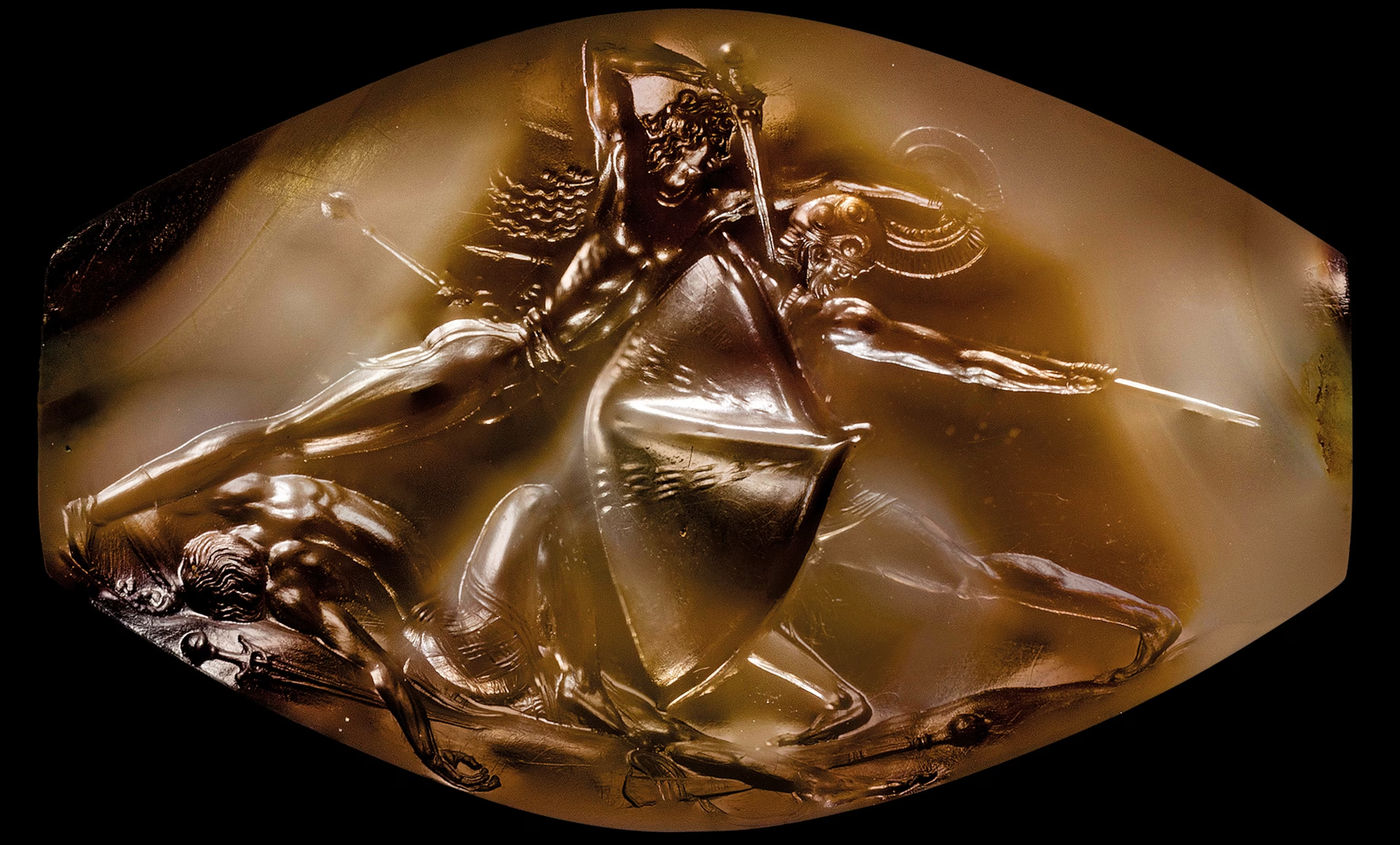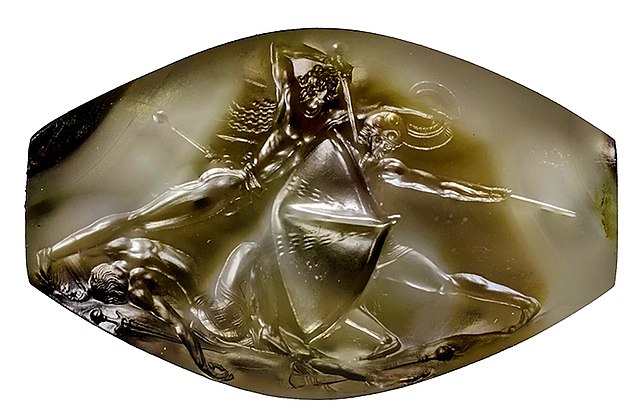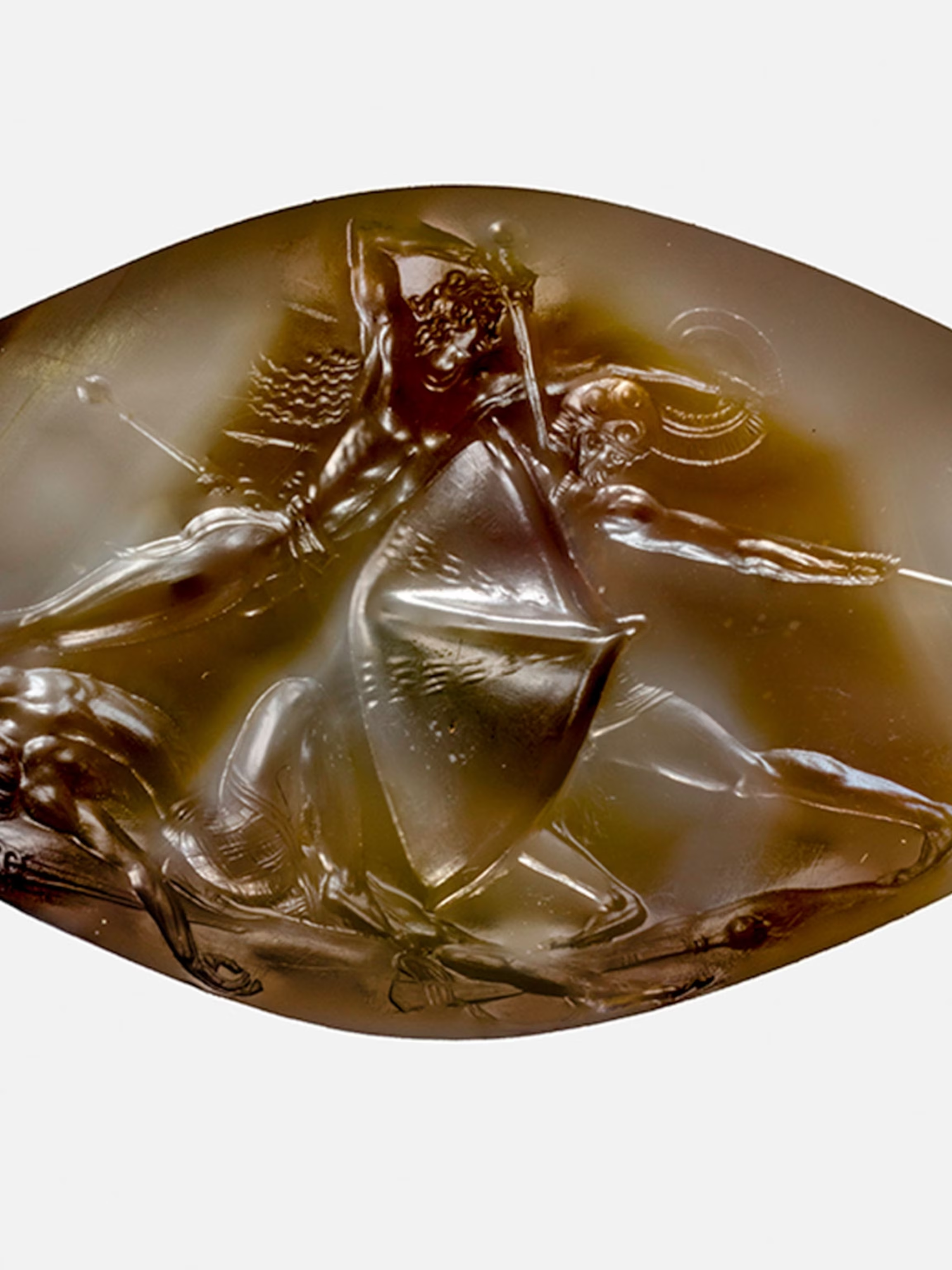The Pylos Combat Agate: An Amazing 1.4-Inch Seal Stone Found in the Griffin Warrior’s Grave at Pylos, Peloponnese, Showing a 3500-Year-Old Battle Scene

The Pylos Combat Agate, a seal stone nearly 3500 years old, stands as a remarkable testament to the artistic skill and historical significance of ancient civilizations. Measuring only 1.4 inches wide, this tiny artifact holds within it a vivid depiction of a pivotal moment in human history. Discovered in the grave of the Griffin Warrior in Pylos, Peloponnese, the Pylos Combat Agate offers a captivating glimpse into the world of ancient warfare and the cultural and artistic achievements of the Mycenaean civilization.
The Griffin Warrior, named for the striking gold artifacts found in his tomb, was a Bronze Age warrior buried in a monumental grave at Pylos around 1450 BCE. Among the treasures unearthed in his tomb was the Pylos Combat Agate, a miniature masterpiece that has captured the imagination of archaeologists and art enthusiasts alike. Carved from a single piece of agate, the seal stone features an intricately detailed scene depicting the final moments of a battle among three warriors.

Despite its diminutive size, the Pylos Combat Agate is a marvel of artistic skill and craftsmanship. The scene depicted on the seal stone is rendered with remarkable precision and attention to detail, showcasing the artistic prowess of the Mycenaean artisans who created it. Each figure is carefully delineated, with their muscular bodies and flowing garments captured in exquisite detail. The expressions on their faces convey a sense of tension and urgency, capturing the intensity of the moment as the warriors engage in combat.
The significance of the Pylos Combat Agate extends beyond its artistic merits. As a historical artifact, it offers valuable insights into the military practices and cultural beliefs of the Mycenaean civilization. The scene depicted on the seal stone provides a glimpse into the brutal realities of ancient warfare, shedding light on the tactics, weapons, and armor used by Bronze Age warriors. It also offers clues about the social hierarchy and warrior ethos that prevailed in Mycenaean society.

One of the most striking features of the Pylos Combat Agate is its narrative complexity. Despite its small size, the seal stone manages to convey a sense of drama and storytelling, inviting viewers to imagine the events leading up to the final clash depicted in the scene. The composition of the scene, with its dynamic poses and carefully arranged figures, suggests a carefully choreographed battle sequence, complete with moments of triumph and tragedy.
The discovery of the Pylos Combat Agate has sparked considerable debate and speculation among archaeologists and historians. Some scholars have interpreted the scene as a mythical or symbolic representation, suggesting that it may depict a legendary battle or mythological event. Others have proposed more pragmatic interpretations, viewing the scene as a realistic portrayal of historical warfare in the Mycenaean period. Regardless of its precise meaning, the Pylos Combat Agate remains a tantalizing puzzle that continues to captivate researchers and enthusiasts alike.

Today, the Pylos Combat Agate is housed in the National Archaeological Museum in Athens, where it serves as a testament to the enduring legacy of the Mycenaean civilization. Despite its small size, this remarkable artifact speaks volumes about the artistic, military, and cultural achievements of the ancient world. As we marvel at its intricate details and ponder its enigmatic meaning, we are reminded of the timeless power of art to illuminate the past and inspire future generations.
In conclusion, the Pylos Combat Agate is a remarkable piece of history that offers a window into the world of ancient warfare and artistic expression. Discovered in the grave of the Griffin Warrior in Pylos, Peloponnese, this tiny seal stone holds within it a rich tapestry of historical and cultural significance. As we continue to unravel the mysteries of the Mycenaean civilization, the Pylos Combat Agate stands as a poignant reminder of the enduring legacy of ancient Greece and the power of art to transcend time and space.











